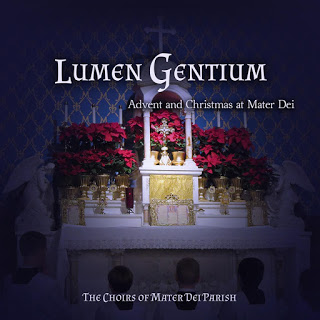Salve Regina
I recently completed a five part Salve Regina for SATBB.
Digital Rendering
Background
This Salve Regina was a difficult piece for me to work on, as 2016 has been a roller-coaster year for me emotionally. There are many different feelings written into this piece, maybe some I haven’t fully recognized. The piece turned out more complicated than I expected.
My primary goal when I set out to write this piece was to produce an artistically pleasing setting that is true to the text. This prayer to Our Lady is one of pleading. It is the petition of the “poor, banished children of Eve”. Whatever other emotions may be there, the plea for Our Lady’s help should rise above all else.
This setting of Salve Regina is available for free download at the bottom of the post (Creative Commons).
Exposition
This setting is loosely based on the solemn chant. In fact, it begins with the chant set in D-minor, and the polyphony starts as if picking up the chant line at “Vita dulcedo” and inverting it (sort of). The chant returns at “Et Jesum” and is mostly present in one voice or another until the conclusion.
I was freer with modulation in this piece than in some of my other recent compositions. Already at “dulcedo”, we are transitioning away from D-minor into G-minor, with a brief jaunt into C-minor. At “Ad te clamamus”, we are firmly established in G-minor, having landed on the suspenseful and somewhat unexpected D-major leading chord.
Ad Te Suspiramus
At the end of measure 18, the alto introduces the next theme on “fillii Haeve”, which is imitated in the other voices on “Ad te suspiramus”. Each pattern of four eighth notes picks up in one voice where it left off in the previous, such that at each entrance, the theme has moved up a step. The exception is the soprano, who has a descant of half notes above everyone else, sending up her sighs. I particularly like the mournful fourth from La to Mi (G to D) in the soprano’s “Ad te suspiramus”.
At measure 23, there is an intentional tritone jump in the Tenor line, as we sing of “mourning and weeping”. Likewise, “in this valley of tears” is repeated for emphasis into a cadence that transitions back to D-minor.
Eia Ergo Advocata Nostra
At “Eia ergo”, there is a stark contrast as the voices enter on B-flat major. We’re still pleading, but there is hope. We have an advocate. The theme of the “Eia ergo” is the chant Ave Maria, which I purposefully placed here as if we banished children are referencing the Angel’s greeting even as we call upon our Mary, our advocate. It is as if we are reminding Mary of this greeting when making our petition, highlighting that she was conceived immaculate, but we, in contrast, were conceived in sin.
Illos Tuos … ad Nos Converte
The modulation comes back in earnest at “turn thine eyes of mercy towards us”.
In the middle of measure 41, the acceleration on the word “nostra”, culminating in the tenuto/staccato marking, is optional. I like the idea of building both in speed and volume there with the sudden silence at measure 42. I think it accentuates the emotion of pleading and provides suspense between “advocata nostra” and “illos tuos”. One could also sing it more legato and in time.
“Advocata nostra” ends on G-minor; then things go crazy. B-natural is thrown in as a leading tone, the soprano is all over the melodic minor scale, and ultimately we “convert” to E-flat major after an A-flat major chord. The “ad nos converte” in the soprano is a nod to Victoria’s “O Vos Omnes” where he uses the “La-Fa-Sol-Do” pattern in the bass on the word “meus” of “sicut dolor meus”. Again, the reference to the text is intentional. We are asking Our Lady to turn her eyes towards us and our misery, even as we are mindful to look and see if there is any suffering like hers.
Et Jesum
At this point, we ask for something great indeed: that at the end of our lives Mary would show us Jesus, whom she bore in her womb. The bass has the deep, solemn “Et Jesum”, and the other voices build together in small, staggered motions, again with that pleading hope. Emphasize the accented syllables of the words as the pitches rise (the second half note as opposed to the first) for an interesting effect. There should probably be a gradual increase in dynamic through “benedictum fructum ventris” and diminuendo on “tui”. One voice, however, is not with the others. The tenor picks up the chant melody and sings it syncopated against the other voices.
Nobis post hoc Exsilium Ostende
Polyphony overcomes the homophonic passage before it, and at “nobis post hoc exsilium”, each voice has its staggered entrance. The alto takes over the chant melody from the tenor, with baritone imitating. Note the ornamented “ostende” in those two voices. The text of the Salve Regina again declares our exile.
O Clemens! O Pia!
At measure 63, the tenor leads us into the climax of the Salve Regina. Each voice leads to the next voice’s starting note. Hence, tenor sings G-C, alto C-G, soprano G-C, bass C-G, and the baritone comes in on that G. The soprano has stacked fourths (G-C-F) later imitated by the tenor.
The highest point of the piece is the soprano’s “O pia!” which has the passing A-flat. This section should scream of pleading (but please don’t actually scream here).
O Dulcis Virgo Maria
It is now the soprano’s turn to take up the chant melody, which she carries to the end. The tenor imitates the chant melody two measures later. The other voices have complimentary melodies. Soprano, alto, baritone, and bass sing “Virgo Maria” together, but the tenor has the last word, which is of course, “Maria”. The other voices have earlier diminuendos to let the tenor come through. All fade to silence.
Notation Notes
The chant line of Salve Regina at the beginning is written in modern notation because that is what my music notation program can play back. I added some time (extra 16th here and there) to trick the program into playing it back in a more fluid sounding way.
After the transition from chant to polyphony, the key signature remains G-minor, and I make a point of ending the piece in G-minor, even as there are a number of sections having A-flat where the key signature could be C-minor.
The piece ranges in pitch from low F in the bass to a single, high A-flat in the soprano. There is also a fair amount of cross-voicing. At one point in “Eia ergo” the baritone is above both the tenor and the alto while it imitates the theme.
Conclusion
Please download the piece. Tell me what you think. I welcome feedback and especially would like to know if you are singing this Salve Regina or any of my compositions.
About the Featured Image
The featured image is Madonna and Child by Franz Ittenback. It is in the public domain in the United States.





